|





|
Overview of
KIDWARE's 17
Software Programs
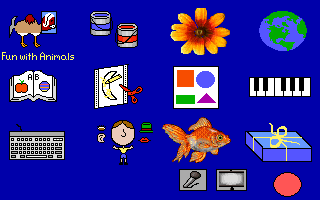 |
|
The 17 children's software programs are organized into
five levels for ease of introduction. This organizational structure
supports young children's development of concepts and skills, and lets
you use KIDWARE all year through!
All KIDWARE programs support the use of the keyboard and mouse. This
facilitates partnering at the computer and the inclusion of children
with special needs. |
Software Programs
Level One Software Programs - Fun
with Animals, Electronic Easel,
I can count the petals of a flower.
Level Two Software Programs - Neighborhoods (Farm, City,
Alaskan Village and Island).
Level Three Software Programs - Fun with Letters and
Words,
Mural Maker, Electronic Builder.
Level Four Software Programs - Music Maker, KIDWARE
Writer.
Level Five Software Programs - Face Maker, Aquarium,
Tool
Kit for Kids (Speech Saver and Slide Show).
(Similarities/Differences,
Classification and Categorization, Vocabulary Development, Visual &
Graphic Arts, Mathematics)
|
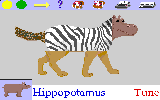 |
|
Fun with Animals
Choose from the body parts of 20 different animals to
create your own mixed-up animal, or be challenged to find body parts to
make a real animal. Record sounds or a name for your special animal.
Place the animals in their habitats: farm, desert, grassland, arctic. |
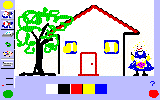 |
|
Electronic Easel
This open-ended software program lets you make
discoveries about mixing colors. You can mix colors to create your own
personal paint box. Choose the size of the line for drawing, or have
your paintbrush draw with circles, squares, or spray. |
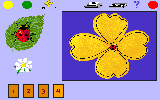 |
|
I can count the petals of a flower
Developed in cooperation with the National Council of
Teachers of Mathematics, this program contains photograph-like pictures
of flowers taken from the book I can count the Petals of a flower.
An animated ladybug helps you count the petals of the flowers. Teachers
can set levels and number ranges to individualize for each child's
needs. |
(Social Studies, Geography, Values)
|
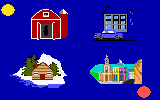 |
|
Neighborhoods
The primary purpose of social studies is to help students
develop the ability to make informed and reasoned decisions for the
public good. As citizens of a culturally diverse and democratic society,
they understand that they live in an interdependent world. To help you
achieve this understanding, Neighborhoods includes four
environments that represent rural, urban, village and island community
life. Children have many opportunities to explore, create and affirm
cultural background and native language.
These four simulated computer environments, called microworlds, give
children access to and control over concepts. Children have the ability
to meaningfully manipulate and control concept components such as
transportation, vocational options, etc. Youngsters create life-like
scenarios with a variety of animals, vehicles, props and multicultural
characters. Children can replay and re-arrange each scenario time and
time again. Automatic access to KIDWARE Writer (a robust word
processing program) dramatically enhances oral language and improves
written expression. Students practice reading and writing in the content
area of social studies when they explore cultures and communities. |
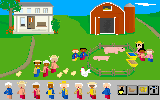 |
|
Farm
You can build your own farm microworld. Select from
the various animals, props, and multicultural characters. Place them
anywhere in the three-screen farm scene. Record speech files for the
people and animals on the farm.
|
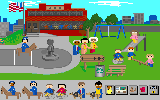 |
|
City
Investigate vocational options. Create your own
bustling metropolis with everything from mounted police officers to mass
transporation. Select vehicles, park animals, props, and multicultural
characters. Place them anywhere in the city scene.
|
 |
|
Alaskan Village
Use Alaskan Village to explore and create a native
Eskimo community. The realistic scenes based on an authentic village
help children think about what life might really be like surrounded by
snow most of the year. Learn more about Eskimo children by reading the
book: Mama, do you love me? by Barbara M. Joosse.
|
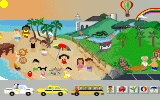 |
|
Island
Students use Island to investigate basic topographical
features including oceans, mountains and beaches and how these impact
living conditions and economic opportunities in a community. Students
record narrative sequences to expand their thinking and bring life to
their community scenarios.
|
(includes Phonemic Awareness, Alphabet Recognition,
Vocabulary Development)
|
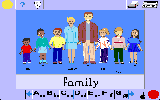 |
|
Fun with Letters and Words
Helps young children develop phonemic awareness and
word recognition skills! Press on any letter and words appear beginning
with that letter along with a picture. Hear the word voiced aloud in
English or your home language. Add your own personal words (family
members, friends, pets, etc.) to the list to individualize the
experience and make practice meaningful. Print your own individual
picture dictionary. Teachers can add vocabulary lists. Import pictures
from Electronic Easel, Electronic Builder, or Face Maker to customize
your word list.
|
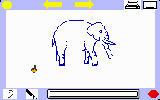 |
|
Mural Maker
Here's another way to practice phonics! Build
students' understanding of how print represents the sounds of speech.
Select and print objects that can be used to create thematic murals or
make puppets to use in other classroom centers. Objects are organized
into six categories and available in two sizes. Teachers can add their
own pictures. Teachers can also incorporate Mural Maker pictures with
notes to parents. Children are sure to deliver these notes home!
|
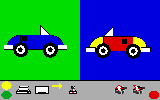 |
|
Electronic Builder
Explore a world of designing and constructing. Create
abstract and representational designs. Rotate your shapes as you explore
positions in space. Use the rubber stamp to make multiples of a shape or
color. Save your designs and offer these as challenges for others to
reconstruct. Teachers can adjust levels of complexity for each child
individually. Integrates easily with math manipulatives--tangrams and
geoforms!
|
(Self-concept Development, Meaningful Math, Science)
|
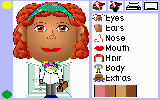 |
|
Face Maker
Select from a wide variety of features to construct
your own character. Choose from multicultural and ethnically diverse
possibilites. Completed pictures make an interesting classroom portrait
gallery. Program your character to dance, smile, wriggle its ears, and
more. Play a memory game with your character's actions.
|
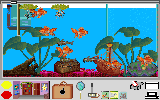 |
|
Aquarium
Aquarium offers learning activities that stimulate
creativity and require problem-solving. Actively explore the set-up and
maintenance of a school or home aquarium. Select the plants and the
types of fish that live together peacefully to create a balanced
ecosystem. Consult books for information needed for a successful
aquarium. Use the "build your own fish" activity for a
whimsical experience. Make an underwater creature like no other in
nature--lots of creative fun!
|
|
|
TOOL Kit for KIDS |
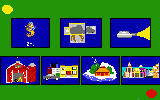 |
|
Access the easy-to-use recording studio even the
youngest students can create multimedia presentations! Children record
their own personalized messages, scripts and sounds for the many
characters in the Neighborhood programs.
This exciting software program includes features that support children's
portfolio assessment. For example, Carmen reviews, selects, and comments
on her computer creations, and then plays them back as a Slide Show. Her
show can be shared (via disk) with peers, teachers and family members or
uploaded to the school webpage for worldwide availability. |
All content and images are copyright (c) 2002
MOBIUS Corporation All Rights Reserved.
KIDWARE is a registered trademark of MOBIUS Corporation. |
Webmaster: Send
mail to plargent@brightbluesoftware.com
with questions
or comments about this web site.
Taskmaster: Send mail to dlargent@brightbluesoftware.com
with questions
or comments about Bright Blue Software solutions.
Copyright © 2001-2017
Last modified: August 11, 2017
Bright Blue Software © 2001-2010
|